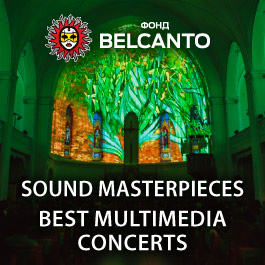IP in tourism sector
Travel industry has faced very difficult times due to COVID-19 crisis. Before the pandemic tourism was one of the main sectors of international trade. Certainly, tourism will retain its positions as soon as the epidemiological situation is stabilized as traveling is many people’s passion, hobby and most popular leisure. For many countries and economies tourism is the main source of income, it is an important source of government revenue, and for some countries tourism sector is crucial.
Like in many other areas of industry the importance of intellectual property is considerable in tourism sector. IP may promote development of tourism and touristic businesses. Similar to many other fields of industry it is possible to carry out effective protection and management of IP in the services sector and particularly in tourism. At that a large part of tourism industry is related to sports, active leisure and related sectors (infrastructure, training, events, production and sale of sports and leisure goods, hotel business, transportation etc.). The tourism industry creates excellent opportunities for public and private investment. Therefore, the strategic use of the IP system in tourism sphere is of utmost importance for this industry like for many others. In order to improve the products and services marketing entrepreneurs involved in the tourism sector can create and obtain rights to IP objects: trademarks, trade names, commercial names, designs or even copyrights. The effective tools of the IP system are also available for suppliers of goods and services from related fields of activity (for example, souvenir producers, food producers, restaurant businesses, transport service providers etc.).
Two branches of intellectual property may have relation to tourism sector: a) industrial property (such as means of individualization: trademarks, firm names, commercial designations and geographical indications and design patent rights) and b) copyright and related rights.
Developing and commercialization of IP rights through different mechanisms such as licensing or franchising is relevant to providing services in the touristic sector. Traditionally the most effective instruments for this are trademarks (service marks), collective marks, geographical indications (appellations of origin of goods), certification marks, industrial designs and copyrights, which may appear in promotional materials, guides, brochures and publications, software, photographs, films, videos, multimedia products, billboards etc. The key point for attributing tourist products to IP objects is its creative component, which would enable to consider such products as an exclusive result of the human mind.
Trademarks (Service marks)
Businesses need to individualize themselves, make themselves different from competitors, become distinctive and noticeable among consumers and enforce their rights if other parties use the same or similar means of individualizations for the same or similar goods/services without consent. These are the most important functions of the trademarks from the legal perspective. Also, trademarks – especially those which have been used for a while and have good reputation – have commercial value.
From the legal perspective trademarks are signs capable of distinguishing goods and/or services of one enterprise from those of another one. Traditionally, these could be words, logos or their combinations but today shapes of products, sounds, animations, colors or smells can function as trademarks and may be legally protected in many jurisdictions provided they have distinguishing capability or have acquired distinctiveness through intensive use. Trademarks have territorial principle and depending on judicial system of a particular country they should be registered or may be unregistered but still enjoy legal protection (in the latter case trademark rights result from the use of the trademark by its owner).
Trademarks may belong not only to a particular person or enterprise. Cities or regions can make use of legal protection of trademarks. Place branding has gained popularity recently and trademarks, logos or slogan are often used to identify goods or services from a particular region and they create a distinctive image of this place (“I love NY”, “St. Moritz” etc.).
Collective marks
Collective marks are a special category of trademarks that may be particularly relevant to the touristic sector. Such marks are owned by associations or amalgamations of enterprises, the members of which are allowed to use them keeping in line with certain standards of quality. Belonging to such an association may provide benefits and recognition: for example, a collective mark may be a good option for an association of independent hotel owners, who share the same goal and similar business models. For instance, private hotels in rural areas may be promoted and developed through a common brand, which is widely respected and recognized. Due to tight competition on the market such collaboration may be much more effective and beneficial than operations of individual hotels, especially for small and medium sized enterprises who can work in cooperation. “Logis” can be named as an example of a collective mark in hotel industry.
Certification marks
Certification trademarks attest that the user of the mark meets certain established criteria. They are also popular in the travel industry because they allow companies to provide some distinctiveness and visibility in the marketplace. In Russia certification mars are not a part of IP system but in many other jurisdictions they belong to IP objects. There are many commercial and non-commercial entities whose logos can be used by businesses from the tourism sector (e.g. Green Globe). These logos certify compliance with certain criteria that are important for tourists.
Geographical indications (GI) and appellations of origin of goods (AO)
GIs are designations that allow identifying a product as originating from the territory of a geographical object, while a certain quality, reputation or other characteristics of a product are largely determined by its geographical origin. At least one of the stages of production of the goods affecting the formation of its quality, reputation or other characteristics should be carried out on the territory of this geographical object.
An AO is also a means of product individualization and serves to designate a product, characteristics of which are associated with its geographical origin. However, the difference lies with a less rigid requirement in relation to characteristics of goods: while an AO is used for goods, properties of which are "exclusively or mainly" determined by their geographical origin, namely by natural or human factors of the corresponding geographical area, the properties of the goods, for which GIs are used, are only “significantly” associated with the respective geographic features.
Before the pandemic there had been an active development of such an industry as agritourism. One of the reasons for that was the increased recognition of agricultural products through the use of geographical indications. The most successful examples of agrotourism were seen in the wine industry. One of the most recognizable GIs for wines is Bordeaux or Champagne, regions in France. The region is popular not only as the place where wine production is centralized but also as a travel destination for wine lovers, what creates an industry with many branches: wine testing tours, restaurants, accommodation facilities, transportation etc.
Industrial Designs
An industrial design is an outer appearance of an object having an original graphical solution. Industrial design may be applicable to a wide variety of industrial products or handicraft articles (complex machinery, vehicles, watches, jewelry, household appliances, leisure goods, clothing, textile designs etc.) Industrial designs might have direct relationship with touristic sector since such products as new and original national specialties products (new and original forms of bottles or packaging, local textile pattern etc.) or souvenirs may be patented and enjoy effective legal protection as industrial designs.
Traditionally, design rights provide protection for the shape of industrial goods. However, because they can be applied to two-dimensional products, such as textiles, they also may be useful for protecting logos. Similarly, copyrights can be used for this purpose, since a logo is usually a creative work.
Copyrights
A company can use a variety of ways to spread information about itself in the marketplace. These can be informational materials, manuals, flyers, advertisements, and even photographs and pictures. All of these may be recognized as creative works and protected by copyright. Copyright would also offer protection to logos and promotional materials that most such businesses would rely on. Copyright in is also relevant in the context of websites, without which the businesses cannot operate nowadays and companies in the tourism sector are no exception. In order to classify a tourist product as intellectual property, it must be a creative work. Unauthorized use of such work by others can damage the company's reputation and even can be recognized as unfair competition. The IP system provides a variety of options to proceed against unauthorized use of copyrightable objects.
Protecting competitive advantage
Once a company has established a distinctive image in the market what makes the company recognizable for its customers, it needs to protect this image from imitators and imitators. Those factors which give a company a competitive advantage need to be protected. The ways of doing business, pricing systems, discount systems, plans and strategies, research data, i.e. anything that allows the company to compete more effectively, are confidential information which, under certain conditions, may be protected as trade secrets. Booking and reservation systems and its content, databases, company’s internal software as well as other similar information technology solutions may be protected by trade secrets, copyrights or patents or a combination of these rights depending on the national legislation of a particular country.
Tour programs or other touristic products can be considered as an object of know-how, which means information of any kind that has actual or potential commercial value. The main characteristic of such information is that it is unknown to third parties due to the restriction of access to the information by its owner. Protection of know-hows may be available in the touristic sector, for example, for methods of processing incoming data or special management decisions in an enterprise. Although the know-how regime cannot be applied directly to the tourism product itself as the final product of the intellectual activity, because the confidentiality of such information cannot be observed. Nonetheless, it can be applied to the individual stages of development of a touristic product, for example, to the method of operation or development.
Commercialization of IP in tourism
Intellectual property rights are a tangible asset, which can be used and leveraged to create more value. The owner of an IP right (trademark, collective mark, certification mark, design right, copyright, etc.) can grant others the right to use that IP object under certain conditions through providing a license or franchising. This practice is common in the sphere of tourism. Licensing gives the holder of an IP right the opportunity to generate additional income from his IP assets by receiving royalties from his licensee.
A popular form of licensing is franchising, which is a system when an IP owner grants another person or company the right to operate under the same business model using his trademarks and other relevant IP objects integrated into that business. Franchising is one of the fastest growing industries and it is important to the tourism industry as franchising models are applicable to hotels, restaurants, transportation, cleaning etc. Many hotel chains (like “Hilton”, for example) are benefiting from this business model. The hotels in different locations are operated by different independent entities, who have the right to use a complex of IP rights including trademarks. Franchisee can attract customers by operating under a brand that has already built up its reputation and brand awareness, while the IP owner is gaining profits from growth of his business.
Conclusion remarks
The IP system plays an important role in adding value and distinctiveness to the touristic products and businesses and their promotion. In order to have growing, successful and competitive business it is important to have a good product, promote it through branding and gaining additional profits through licensing or franchising.
Touristic businesses may have many options to protect their reputation and goodwill through use of the IP system. The unauthorized use of IP assets could cause damage to the reputation and image of the product and business offering the same. The IP system provides very powerful tools for protecting, managing, exploiting and enforcing the intellectual property rights and strengthening the competitiveness of businesses operating within the tourism industry. Competition is very intense and understanding of importance of IP may ensure sustainable business prosperity.





